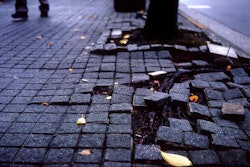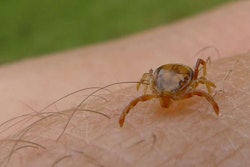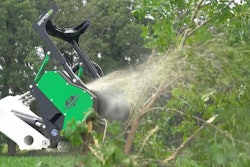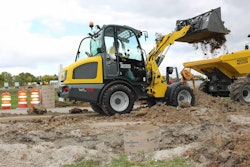 Photo: Jeff Easter/Flickr
Photo: Jeff Easter/FlickrBonsai trees have always fascinated the world, even before Mr. Miyagi showed Daniel-son how to wax on, wax off. With their full-grown tree look and their pocket-sized appeal, they are a great plant to bring a little bit of culture and spark to your customer’s landscape.
Growing bonsais outdoors
Bonsai trees are typically grown in small pots, but they are very different from your average potted plant. While most customers enjoy the bright flowers, leaves or fruits that come with their plants, the intrigue of the bonsai tree lies in the delight that comes from being able to design and form them into a multitude of styles.
Bonsai trees can be purchased from stores or they can be grown from the ground up. For customers who may not necessarily want to wait for their bonsais to grow from seeds, it’s recommended to start with ones already trained and go from there.
For customers who don’t mind the wait, the first step for you is to acquire either a pre-bonsai tree or seeds. If your customers want your assistance creating a bonsai garden, be very careful to select a tree that fits the environment of your customer’s landscape. Most non-tropical bonsais will do well outdoors as long as they are kept safe from intense sunlight and freezing temperatures.
For help identifying the specific type of bonsai your customer may be looking for, check out this bonsai tree identification guide.
As stated before, when you find yourself in a pinch with a customer who wants their bonsais in place sooner rather than later, go ahead and plant bonsais that are already trained. Air layering, a method for propagating trees through the removal of a large branch or section of the trunk to create a new tree, is also recommended because it allows you to create a new tree within one growing season.
Taking cuttings from the bonsais can also help the garden multiply, as well as create new trees that share the characteristics of the original. Some species of trees can produce roots from a cutting faster than some seeds can sprout, which ultimately can save you time.
For the customers who don’t mind the wait, you can start their bonsai garden with seeds. One benefits of starting from scratch with seeds is that it gives your customers the chance to have unique types of bonsais for a relatively low price. Another benefit for you as the landscaper is that starting from seeds gives you the chance to control every aspect of the tree’s development.
Getting to know your bonsai
The roots that line the bonsai are absolutely fundamental and should not be ignored. They are the starting point for having a quality bonsai, and it is important to create a surface root structure (known as nebari).
The trunk is the most appealing part of the tree and creates the illusion of age. For a first step, begin developing a well-formed trunk with a good taper, initial rise, smooth curves and more.
Wiring is the method of bending the trunks and branches using wires. This lets you achieve various shapes. When the tree is still very young, the trunk is bent into a basic shape of a tree. As the plant grows, the first branch is bent, then the second, third and so on until you get to the final branch; this determines the shape of the tree. If you can’t get the shape your customers want with wiring, you can also do it in stages.
Once the tapering, initial rise and wiring is complete, you can begin making the final shape of the plant. The branches, leaves and buds of the tree should all be pruned. Pruning will reduce the tree’s volume, which gives that small size that is synonymous with the words “bonsai tree.”
Indoor and outdoor bonsais
A common misconception about these little guys is that they absolutely must be kept indoors, but that it far from true. Most types of bonsais should be planted outside to really thrive like normal trees.
The most common type of indoor bonsai is the ficus bonsai tree (Retusa ‘Ginseng’). These trees have aerial roots that grow down vertically from the branches, and once they reach the soil they can develop into strong trunks. To get these roots the grow and prosper inside the home, a humidity of 100 percent must artificially be achieved. This can be done by using a glass cover, fish tank or other kind of similar covering.
The most common outdoor bonsai is the green Japanese maple (Acer palmatum). These hail from Japan, Korea and China, and get its scientific name from the hand-shaped leaves, which in most cases have five pointed lobes. On younger trees, the bark is usually green or a bit reddish and turns light gray/grayish brown with age. The greenish yellow flowers are clustered and appear between May and June. The young shoots have orange, yellowish or even bright red leaves.










